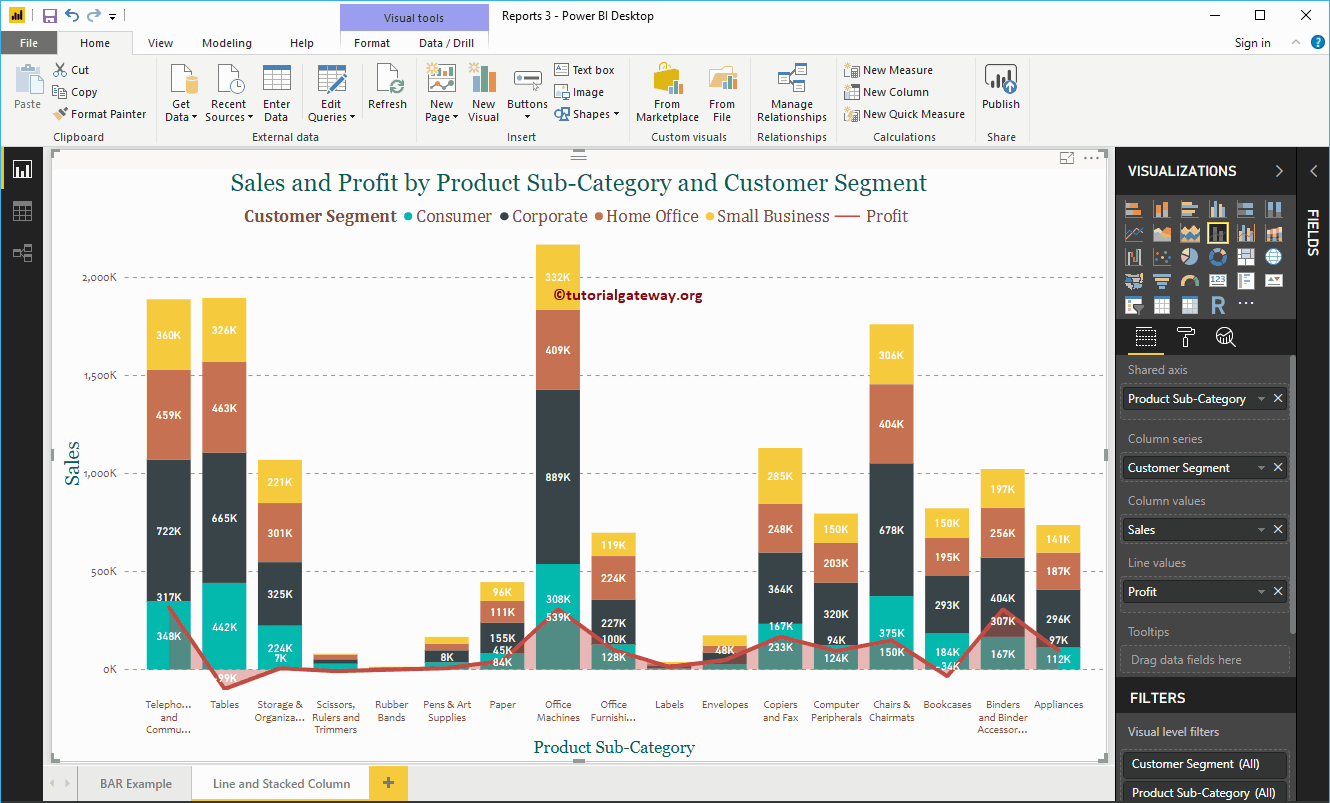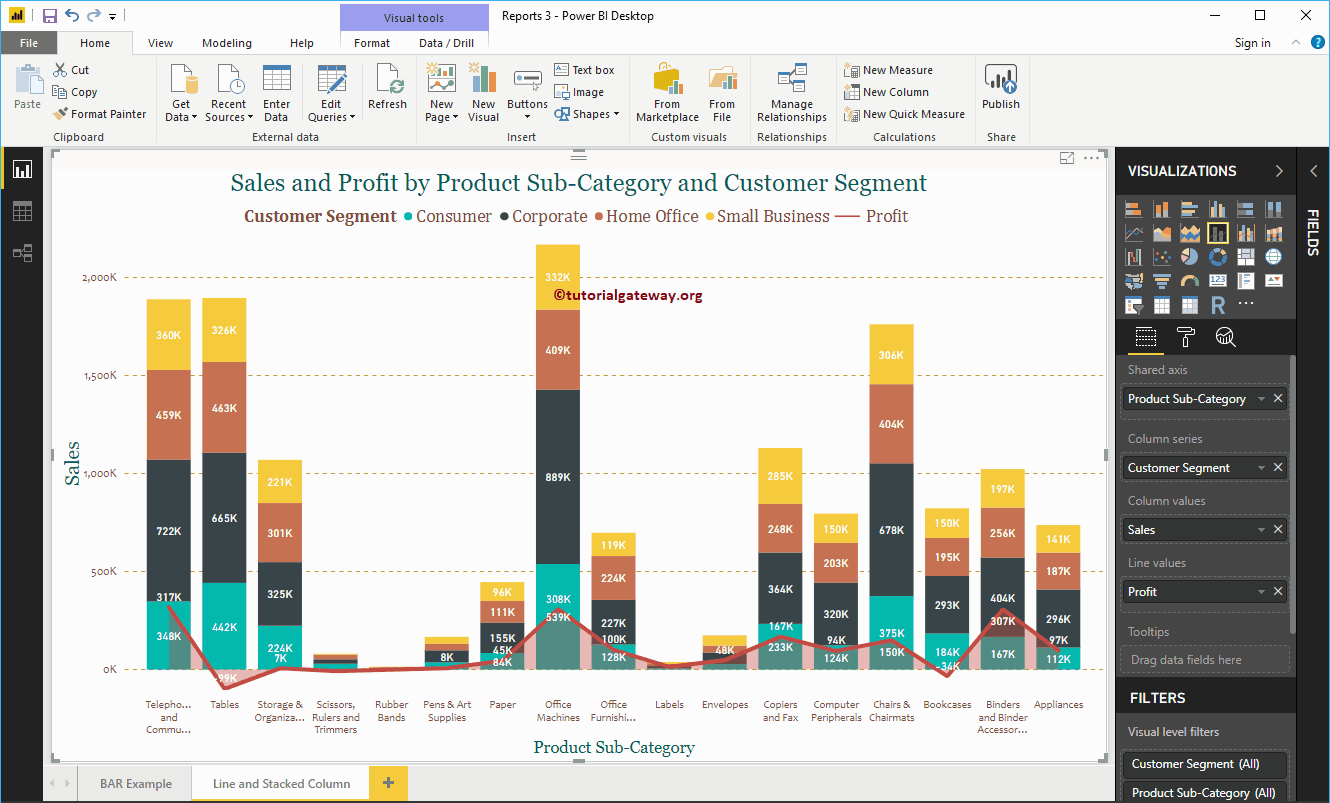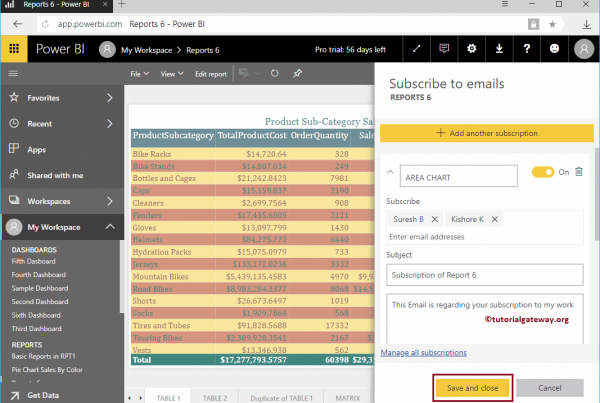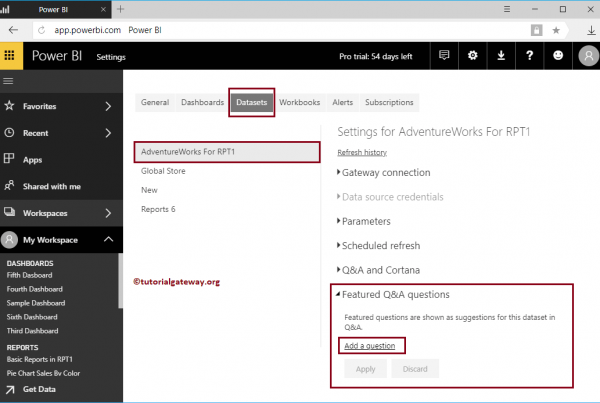The stacked column and line chart in Power BI helps you visualize multiple dimensions and measures. Let me show you how to create a stacked column and line chart in Power BI with an example.
For this Power BI Line and Stacked Column Chart demo, we will use the Excel data source that we created in our previous article.
See the article Connect Power BI to Excel with multiple Excel sheets to understand the Power BI data source.
How to create a stacked column and line chart in Power BI
To create a stacked column and line chart in Power BI, first drag and drop the Field Sales section to the region of the canvas. Automatically create a column chart, as shown below.
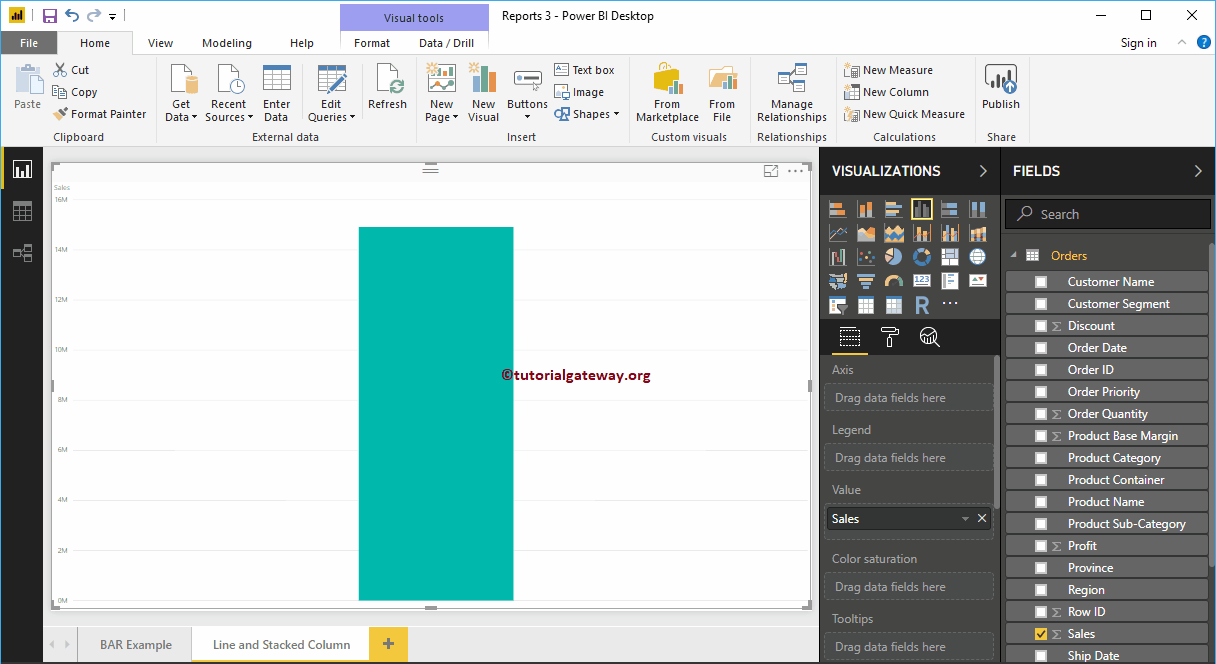 <>
<>
Next, let me add the name of the product subcategory to the Axis section.
Let me sort the data by product subcategory name in English (by default it is sorted by sales amount). To do this, click on the … (3 dots) in the upper right corner and select the Sort by product subcategory name option, as we show below.
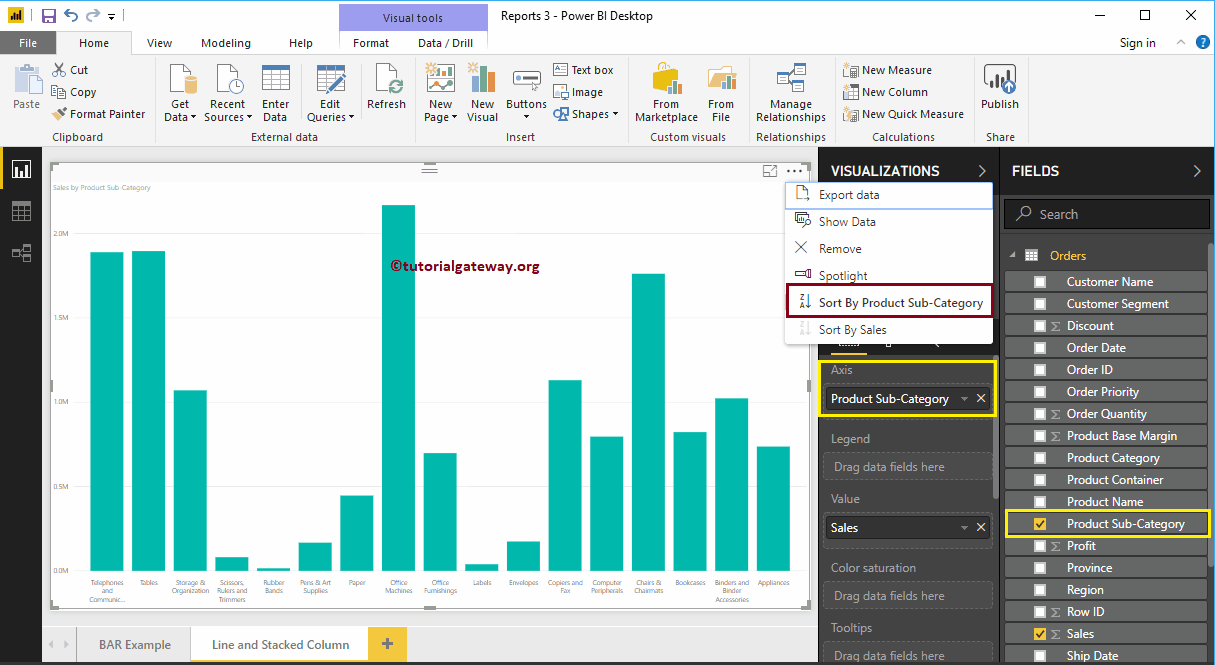
Click on the stacked column and line chart below the Display section. Converts the column chart to a stacked column and line chart. From the screenshot below, you currently don't see the change, because you need to add a few more fields.
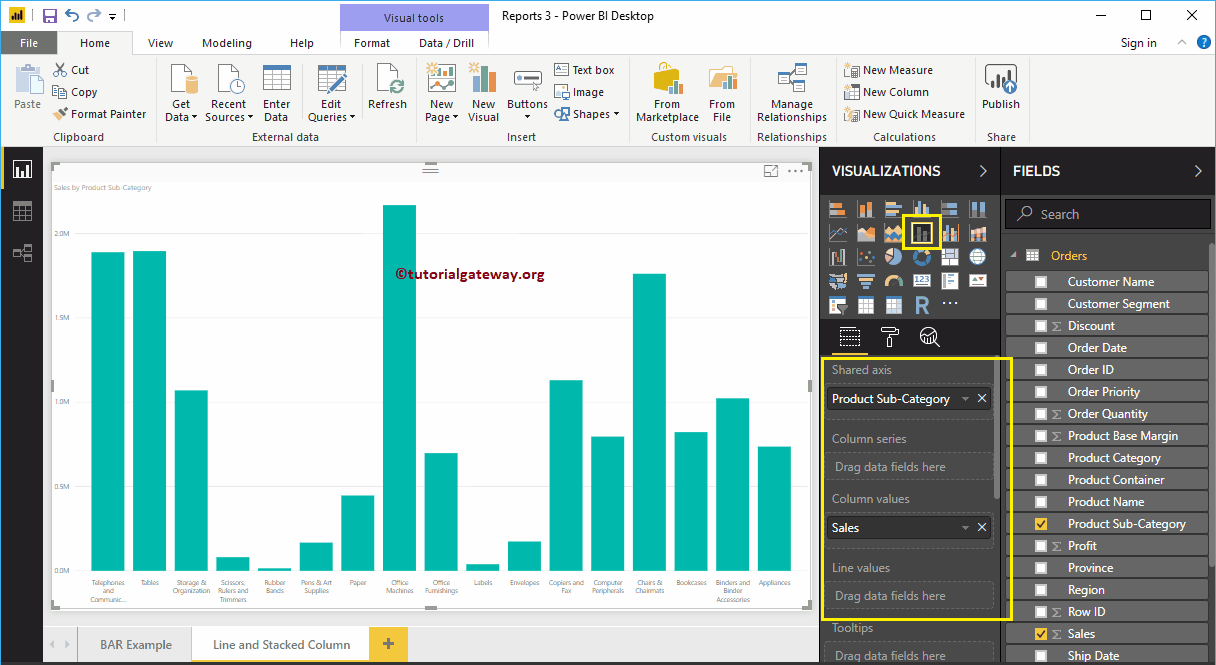
Next, we add a customer segment to the Column Series section to make it the stacked column chart.
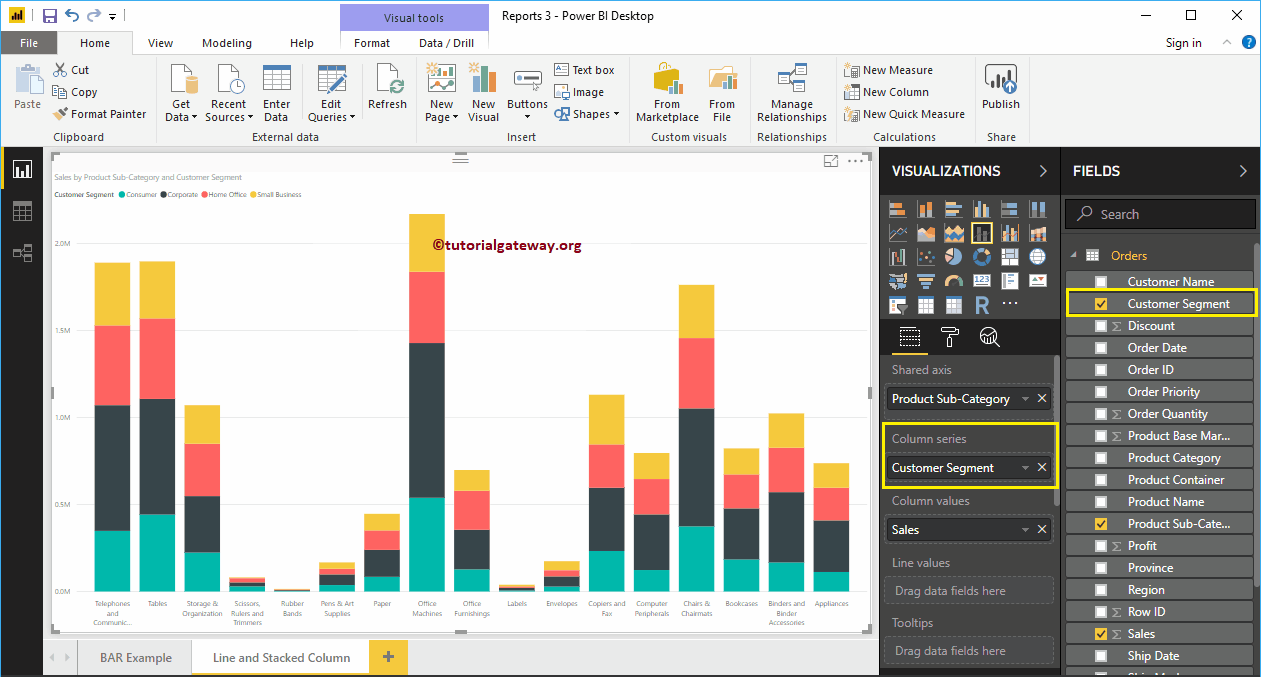
Next, we add the Profit section to the line values to make it the stacked line and column chart.
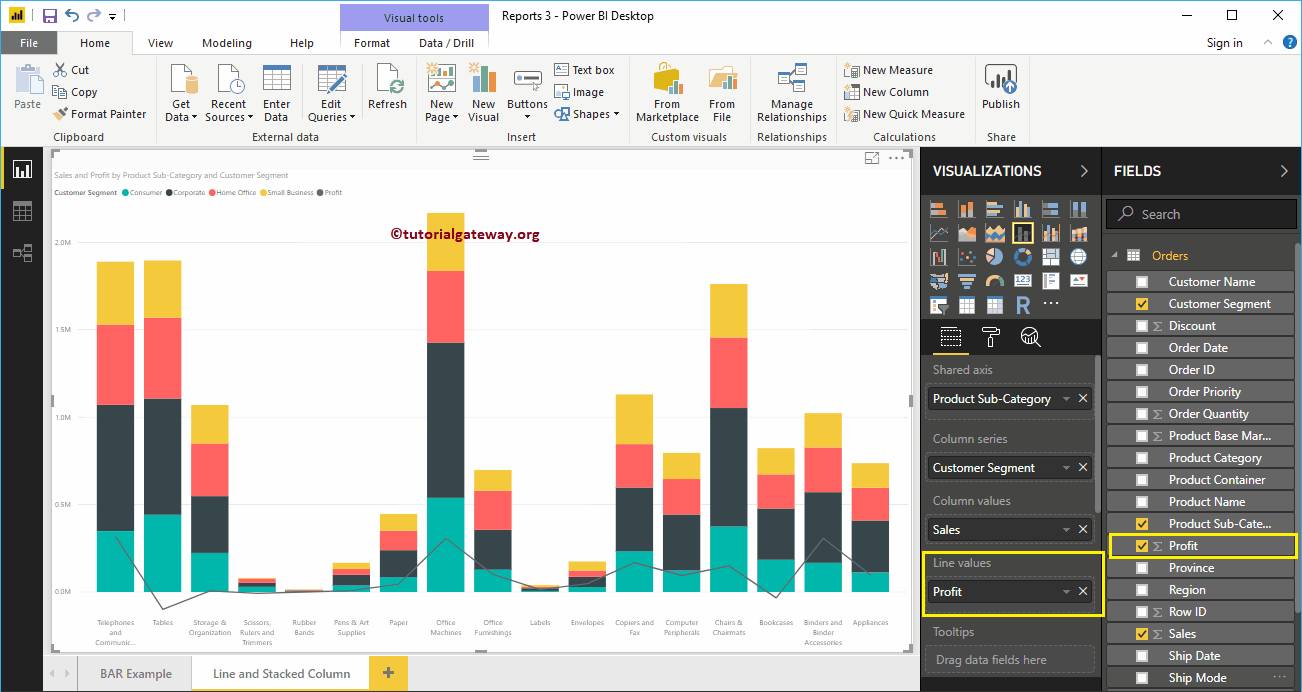
Create a stacked column and line chart in Power BI approach 2
First, click on the Stacked Column and Line Chart below the Display section. You will create a stacked column and line chart with dummy data, as shown in the following screenshot.
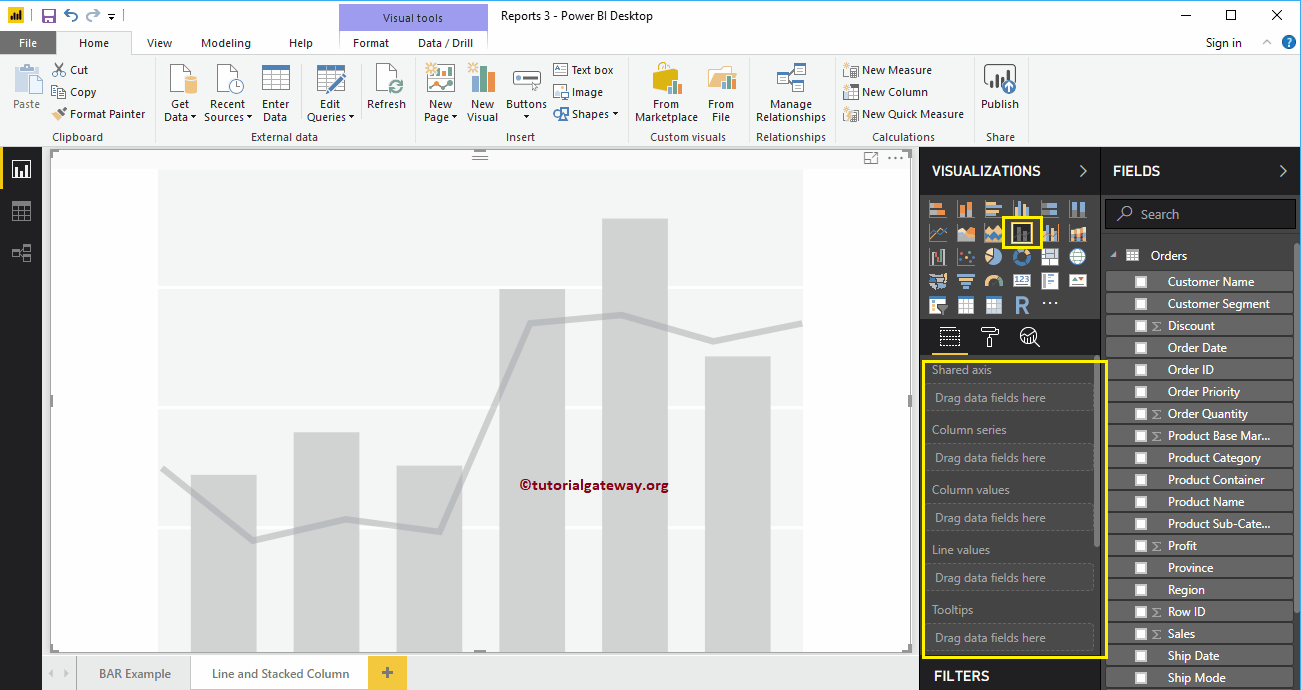
To add data to the stacked column and line chart in Power BI, we must add the required fields:
- Shared axis: Specify the column that represents the vertical axis.
- Column series: Especifique la columna para dividir las bars verticales.
- Column values: Any numerical value, such as sales amount, total sales, and so on, that the vertical bars represent.
- Line values: Any numeric value that the line represents.
Let me drag the Sales Amount from the Fields section to the Column Values field and the Profit field to the Line Values section.
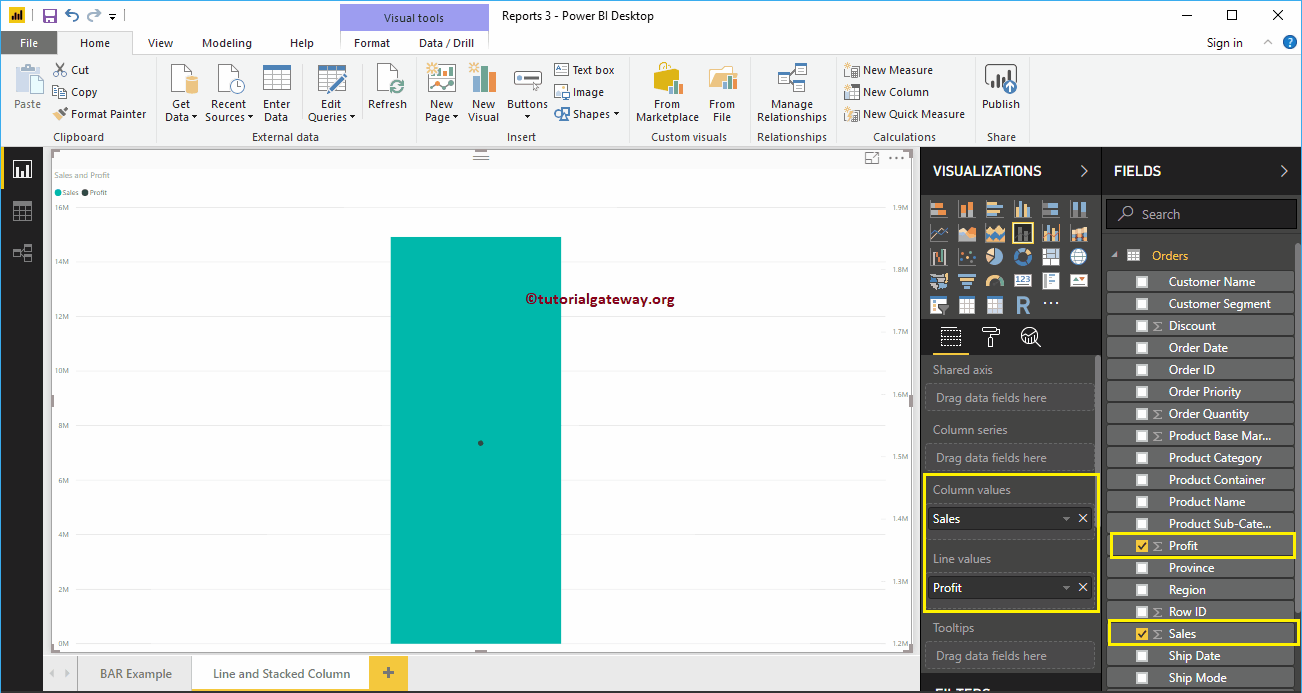
Next, let me add the Product Subcategory Name to the Shared Axis section. You can do this by dragging Product Subcategory Name to the shared Axis section. Or just check the Name column of the product subcategory.
Let me sort the data by product subcategory name. To do this, click on the … (3 dots) in the upper right corner and select the Sort by product subcategory name option, as we show below.
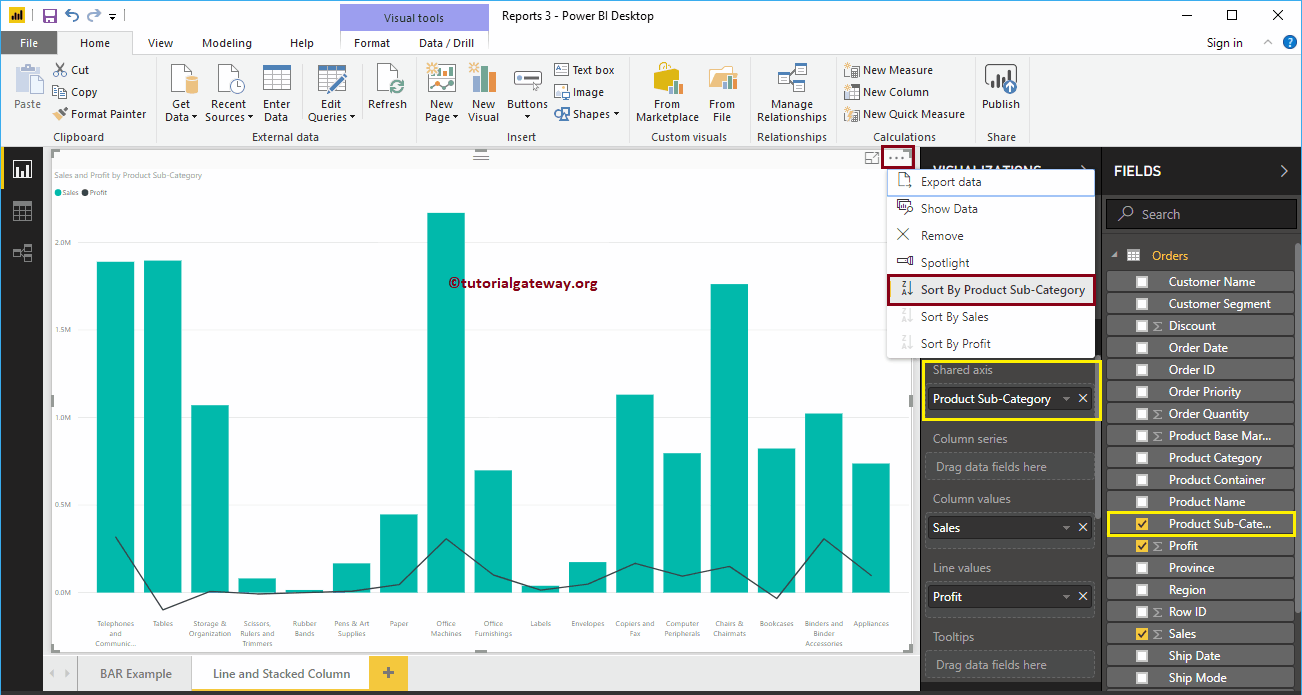
Then add the customer segment to the Column Series section. That's it; we got our stacked column and line chart
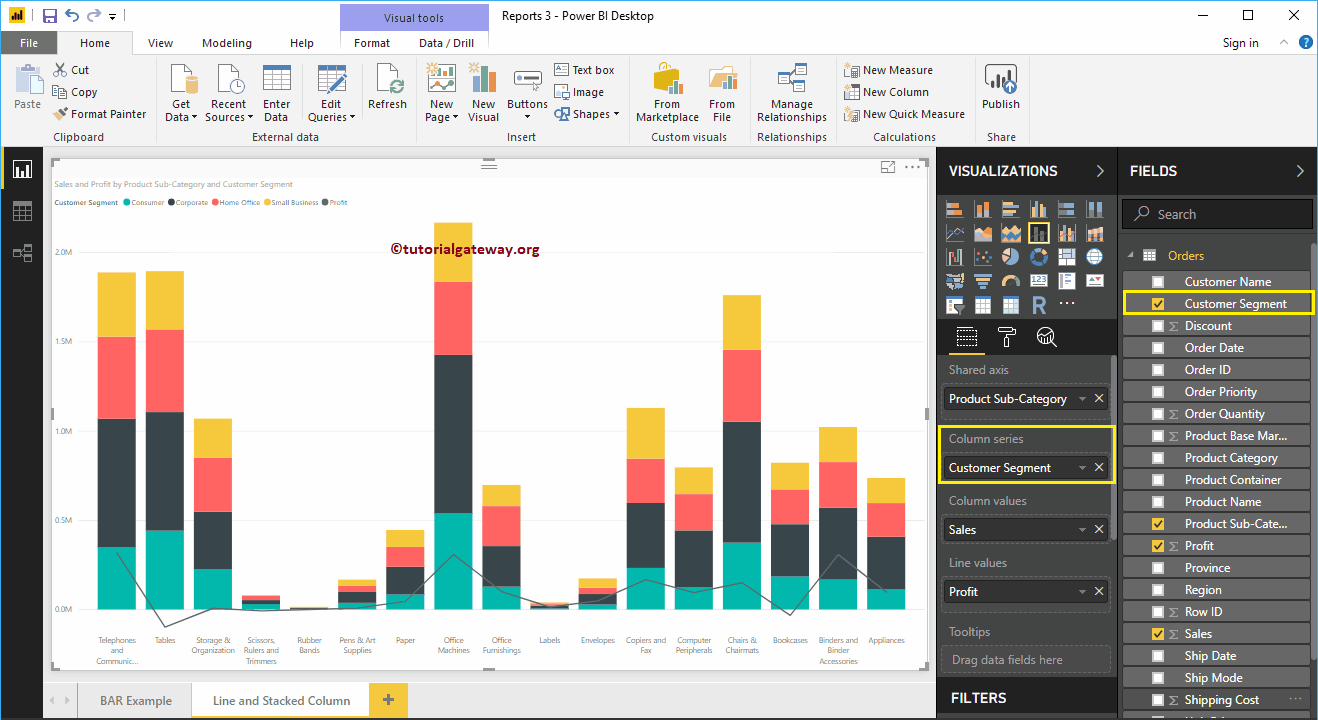
Hover over any part of a vertical bar to display the Product Subcategory, Customer Segment, and Sales Amount tooltip.
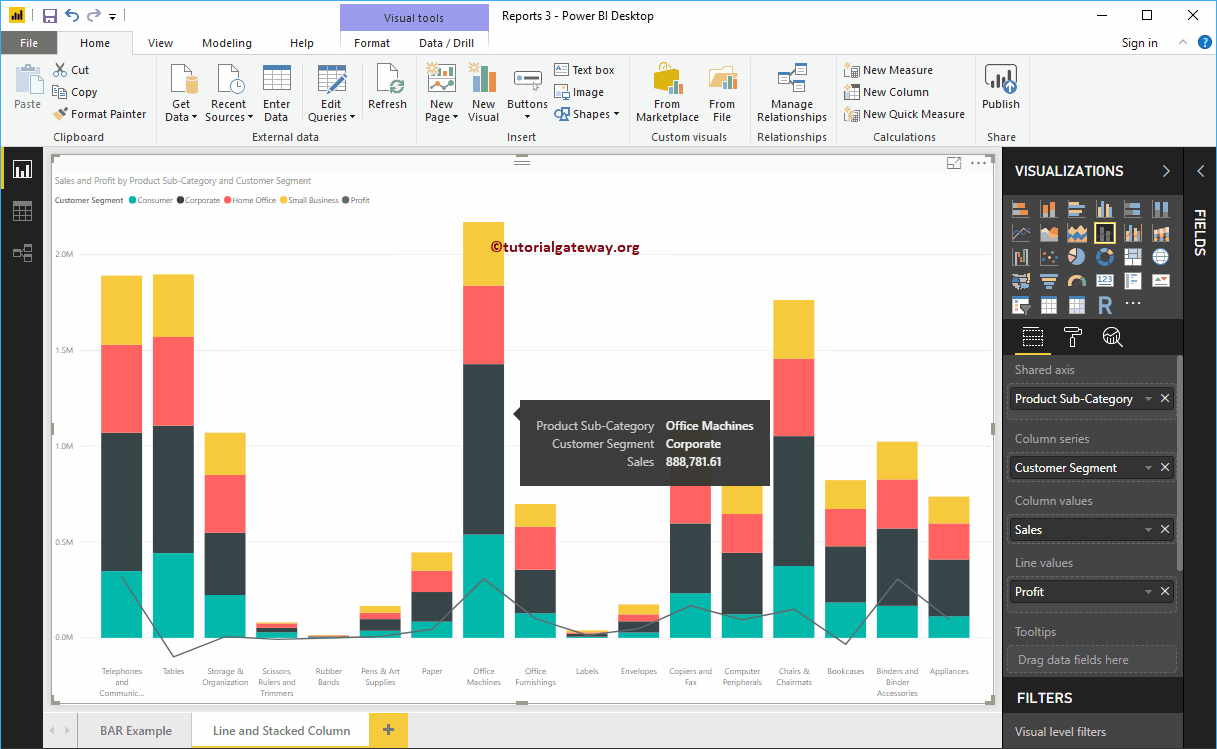
Hover over any part of a line to display the Product Subcategory and Benefit tooltip.
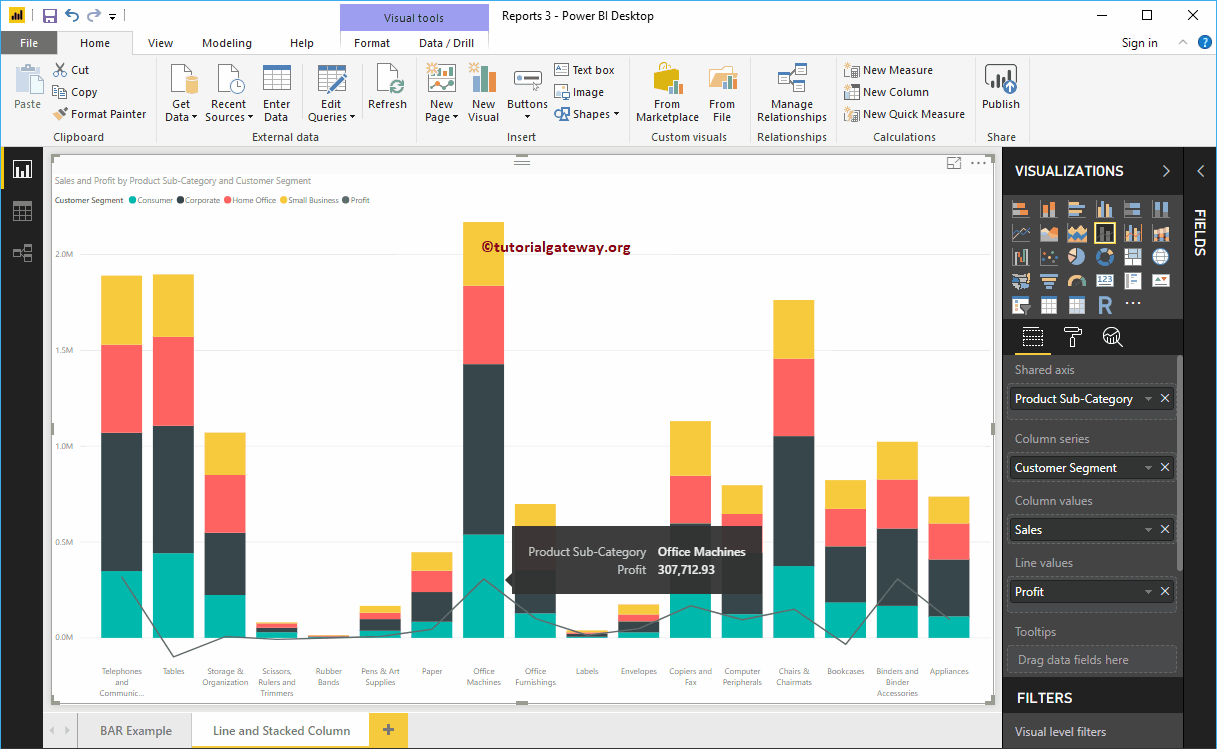
Let me quick format this stacked column and line chart in Power BI.
NOTE: I suggest you refer to the Stacked Column Chart and Line Formatting article to understand the steps required to format the lines, stacked column colors, title, etc.
